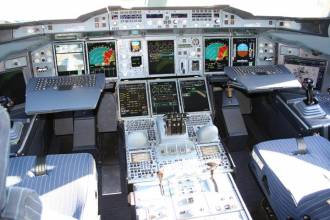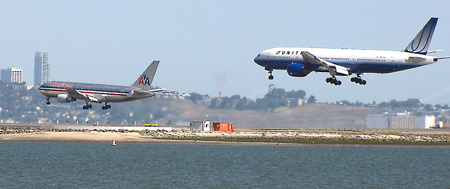The group that sets standards for aircraft navigation receivers is planning work on four new types of devices including the first multi-signal and multi-constellation aviation receivers and a more cost effective navigation system to help planes traverse GPS-impaired areas.
The group that sets standards for aircraft navigation receivers is planning work on four new types of devices including the first multi-signal and multi-constellation aviation receivers and a more cost effective navigation system to help planes traverse GPS-impaired areas.
The RTCA, a nonprofit association that supports and coordinates volunteers developing consensus-based standards, does its work via a large number of committees. Special Committee 159 (SC-159), which will handle the standards for the new receivers, focuses on equipment that uses the Global Positioning System.
The Federal Aviation Administration (FAA) asked RTCA last year to develop minimum operational performance standards (MOPS) for a higher quality inertial reference system (IRU)–like device based on an attitude and heading reference system (AHRS). This standard would use integrated GNSS inputs for corrections and alignment.
Equipment based on these standards would give aircraft self-contained capability to coast through areas with GNSS interference without relying on ground-based navigation systems. Such equipment would enhance the aircraft’s navigation robustness, improve area navigation (RNAV) operations during GNSS disruptions, and reduce the FAA’s costs to maintain ground infrastructure.
The only self-contained systems available now, however, were developed in the 1970s, well before the availability of current radionavigation capabilities. Although these older systems can maintain a level of RNAV performance despite GNSS disruptions, they are too expensive for many aircraft, the aviation agency explained in a background paper on the issue.
“AHRS with air data computers, some with directional gyro inputs, have become economical enough for even the smallest general aviation aircraft,” wrote FAA engineer Kevin Bridges. “But, these AHRS[s] do not have the performance required to support even short-term RNAV capability in areas of GNSS interference.”
The goal, said the FAA, is to have devices capable of providing up to one hour of enroute RNAV performance, 30 minutes of terminal RNAV performance, and 5 minutes of lateral navigation (LNAV) performance for approaches to airports after losing the GNSS input. The operational goals can be adjusted, according to the paper, if the only way to meet them is with the current, expensive inertial systems. The target date for completion of the MOPS is July 2017.
Industry is supporting the creation of the new standards, said committee co-chair Chris Hegarty of the MITRE Corporation, noting that they are enthusiastic about being able to offer a lower cost system.
The vendors want standards for inertial units that are calibrated using GPS, Hegarty told Inside GNSS. “It is kind of a cheaper version of an inertial reference system for an aircraft than what is flying today,”
The organizations that have expressed an interest so far, he said, are Airbus, Honeywell, Northrup Grumman, Textron, Thales, Rockwell Collins, and the Japan Aerospace Exploration Agency (JAXA).
Before the work can begin the RTCA must update SC-159’s terms of reference and the organization’s Program Management Committee must give the go-ahead. RTCA has already begun reconstituting Working Group 2C (WG-2C), however, which will handle the task. Those interested in participating should contact Harold Moses at the RTCA <hmoses@rtca.org>.
WG-2C will have plenty to keep it busy. In addition to MOPS for the IRU-like system, it would handle proposed standards work on three other receivers. The first, which was requested by the Russians, is a new GPS/GLONASS receiver that would use just use signals at the L1 frequency.
The target date for completion for the GLONASS MOPS is September 2016 though it could be delayed if the GLONASS service is not ready. There will be a “GLONASS constellation readiness review” completed in March. The Russians must also supply enough information to make it possible to write the new standards.
“Like many of our proposed new MOPS that involve foreign systems, this is subject to getting enough data to support this from the Russian system,” said Hegarty.
Finally SC-159 is proposing to develop MOPS for two receivers that use both the L1 and the L5 signals. The first is a combined GPS/SBAS (satellite-based augmentation system) receiver standard to be completed in December 2018. The standards document will be structured to have requirements for, and facilitate optional support from, Galileo, GLONASS, and BeiDou when they are ready.
The final proposed receiver would also use the L1 and L5 GPS signals combined with a ground-based augmentation system (GBAS). For this the committee would develop the MOPS and the interface control document or ICD. The target date for completion is December 2019.






